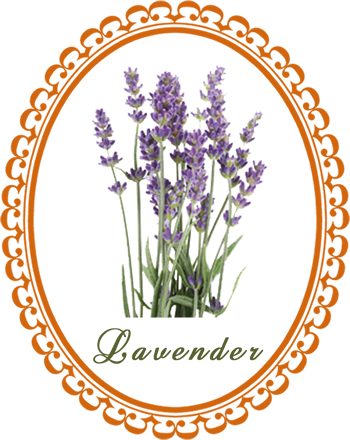
Lavender: this versatile, well-known herb has calming and relaxing qualities suitable for use in the body's many systems ...
Common Names: Lavender, Elf Leaf
Botanical Name: Lavendula augustifolia
Family: Laminaceae
Plant Type: Hardy perennial
Parts Used: Flowers and leaves
Flowering: June - September
Lavender is an evergreen plant native to the mountains of the Mediterranean region. It flourishes in sunny, stony habitats and now grows throughout much of Europe and is widely cultivated in North America and Australia.
Description: Growing as a small, brittle shrub, lavender has a much-branched woody stem and narrow gray-green leaves. Small bluish-purple flowers are borne on a slender spike that rises above the foliage. All parts of the plant are aromatic.
Cultivation: Lavender is usually started from cuttings, as it has a long germination time. It prefers light, well-drained soil in full sun, and some varieties are hardy to zone 5. In the first year, a plant should be prevented from flowering to encourage it to grow into a sturdy, compact bush.
Harvesting: Cut flower stems when mostly open. Use fresh or dry.
Culinary Uses: Use flowers and leaves in vinegars, and fruit jellies.
Lavender Magick
Love. Protection. Sleep. Chastity. Longevity. Purification. Happiness. Peace.
Gender: Masculine
Planet: Mercury
Element: Air
Burn the flowers to induce sleep.
Use lavender in love spells and sachets.
Put dried lavender flowers in your drawers and closets to repel negative energy.
Use dried lavender as incense to deepen your meditations and purify your surroundings.
Place a bouquet of dried lavender on your altar to deepen your spiritual connection and expand your awareness.
Herbal Healing with Lavender
Cosmetic Uses: Lavender stimulates and cleanses the skin. Lavender vinegar is good for oily skin.
Medicinal Actions: Analgesic, antibacterial, anticonvulsive, antidepressant (premenstrual syndrome and menopause), antifungal, anti-inflammatory, antirheumatic, antiseptic, antispasmodic, antistress, antitoxic, antitussive, antivenomous, antiviral, aperitive, calmative, carminative, cephalic, cholagogue, cicatrizant, cordial, cytophylactic, decongestant, deodorant, detoxifier, diuretic, emmenagogue, healing (skin), hypotensor, insect repellent, nervine, parasiticide, regenerator (skin tissue), restorative, reviving, sedative (heart), stimulant (respiratory system), stomachic, sudorific, tonic, vermifuge, vulnerary
Medicinal Uses: Lavender infusions can be taken to combat headaches and depression. Lavender makes a good nerve tonic, and was an ingredient in the "smelling salts" used by Victorian ladies. Use lavender to make a compress for chest congestion.
Body Care with Lavender
- To soothe restlessness, take 1 cup lavender flower infusion up to three times daily, as needed.
- For a cell-renewing, antiseptic skin tonic, was with triple-strength, cooled lavender flower infusion.
Infusion: 1 teaspoon dried or 2 teaspoons fresh lavender flowers in 1 cup just-boiled water. For triple strength, use 3 teaspoons dried or 6 teaspoons fresh flowers in 1 cup water.
Source: The Essential Herbs Handbook by Lesley Bremness
If you appreciate the information provided,
please help keep this website running. Blessings!
© 2008-2025 aromaworx.ca. All rights reserved.

